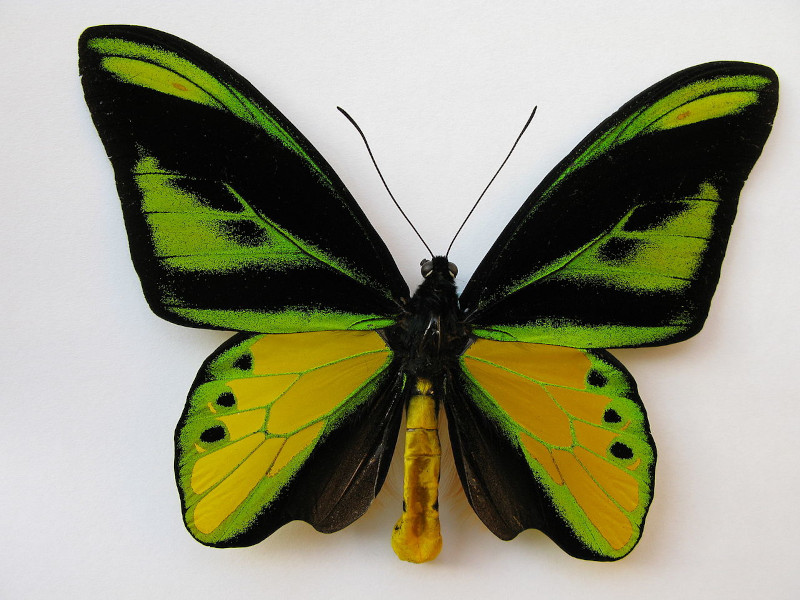
The Ornithoptera Chimaera is an insect that has no common name. This beautiful butterfly lists as a member of the birdwing family and was first identified in 1906. The discovery was made by the renowned Walter Rothschild (who, ironically, was a zoologist).
The IUCN has only listed this Lepidoptera as Near Threatened due to insufficient information available on their numbers to make a definitive classification.
Unfortunately, international trade by collectors remains legal with special permits. The greatest threats to their continued existence, not surprisingly, include habitat loss and climate change.
Ornithoptera Chimaera Physical Description
The colorful Ornithoptera Chimaera forms one of the many insect species which exhibit sexual dimorphism. In their case, this reflects in both size and coloring.
The female is the larger of the genders with an average wingspan of approximately 7.1 in (18 cm). The male grows rather smaller, having a wingspan measuring about 5.9 in (15 cm).
Though larger, the wings of the female stay much less colorful than the male. Her wings predominantly show tan or brown shades, with white spots while her body shows a combination of black and brown. The wings of the male have a pattern of green and yellow, lined with black. His body displays a pattern of black and bright green.
Ornithoptera Chimaera Habitat and Ecology
This insect is endemic to a severely restricted habitat range, living only in New Guinea. Yet even there, they reside only in regions of the tropical rainforest at altitudes ranging between 3,937-9,186 ft (1,200-2,800 m).
The butterfly is most commonly visible flying among the treetops in groups. They also rarely descend to the forest floor, except to feed, and are highly selective of the plants they feed on. Their sole traditional food source is the nectar of the hibiscus. However, they also can feed on the unfortunately invasive species, Spathodea.
After mating, the female lays as many as 20 eggs on the leaves of a host plant. Once hatched, the caterpillars feed on the leaves of the same plant before pupating, which is quite convenient.
Check out our articles on Emperor of India Butterfly, Regal Moth, Mitchell’s Satyr Butterfly, Question Mark Butterfly
